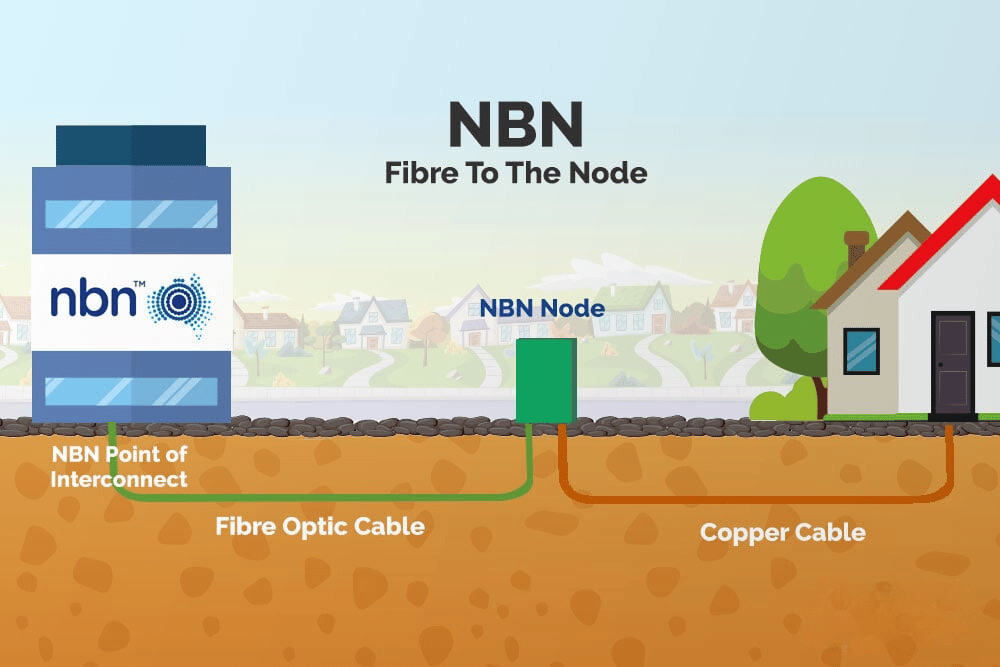
Are You Having Internet Issues?
WHAT IS FIBRE TO THE NODE?
High-speed internet is delivered to homes and businesses using a type of broadband network architecture called fibre to the node (FTTN), which combines copper wires and fiber-optic cables. FTTN is a popular choice for rural and suburban areas because it can be used to affordably connect lots of people to high-speed internet.
Fiber-optic cables are run from a central location, like a phone exchange or a data centre, to a neighbourhood node in order for FTTN to function. Copper telephone wires are then used to connect the node, which is typically a small cabinet, to nearby residences and establishments.
Faster internet speeds than those offered by conventional copper-based broadband networks are the main benefit of FTTN. Users on a FTTN network can anticipate faster download and upload speeds as well as lower latency because fiber-optic cables have a much greater capacity for data transmission than copper wires do. This makes FTTN suitable for activities such as streaming video, online gaming, and video conferencing.
How FTTN functions
Telecommunications companies typically run FTTN networks and connect neighbourhood nodes with fiber-optic cables. Customers can then purchase a modem and a router to connect to the network and access the internet.
A customer’s request for data from the internet is transmitted to the nearby node via fiber-optic cables. The customer’s modem then transmits the data to the customer’s computer or other device after receiving the request from the node over the copper telephone wires.
The same infrastructure can be used by FTTN networks to deliver additional services like phone and television.
Pros and Cons
Even though FTTN can offer faster internet speeds than conventional broadband networks, there may be some drawbacks to take into account. Because the final leg of the connection to the customer’s home is made up of copper telephone wires, FTTN has several drawbacks. Compared to fiber-optic cables, copper wires are less dependable and are susceptible to outside influences like the weather and distance. Customers may experience slower internet speeds and more connection issues as a result of this.
The fact that FTTN networks are less future-proof than fibre to the home (FTTH) networks is another drawback. FTTN networks might find it challenging to meet the escalating demand for internet bandwidth.
However, since FTTN networks do not need fiber-optic cables to be installed all the way to the customer’s home, they may be a more affordable option than FTTH networks. Customers in suburban and rural areas may find them to be more accessible as a result.
In conclusion, Fiber to the Node (FTTN) is a method for providing homes and businesses with high-speed internet. Although more affordable than traditional copper-based broadband networks, this approach has the potential to result in slower internet speeds and more customer connection issues.

Jason Kearney
Head Internet Technician
Jason Kearney is the Head Technician at SECURE A COM, with qualifications spanning NBN, ADSL, phone, and data cabling. Starting as an electrician, Jason quickly delved into the telecommunications sector, leading crucial projects like the rehabilitation of the Telstra network. With credentials in both managerial and technical aspects, he now specialises in phone line and NBN fault location and repair, serving both homes and businesses with effective and personalised telecommunications solutions


